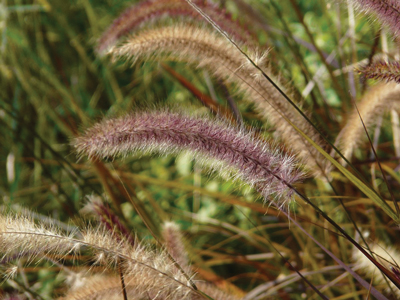By MAGGIE MCMURRAY
Moapa Valley Progress

There is funding available to help get rid of your weeds if you act fast! That is the message from Johnny Jones, Chair of the Southern Nevada Cooperative Weed Management Area (SNWMA). Jones attended a meeting of the Moapa Valley Town Advisory Board on July 26 to get this message out to all residents of Moapa Valley.
The SNWMA is a Cooperative partnership between agencies and concerned citizens that are working toward controlling and/or eradicating, invasive and noxious weeds in Nevada.
Thanks to a grant, SNWMA has a cost-share assistance program to help people get rid of noxious weeds on their property. The grant, which expires in September, still has several thousand dollars available.
“We are really spreading the word,” Jones said. “We would certainly like this money to go towards helping landowners defray the costs of eradicating and controlling noxious and invasive weeds on their property instead of just having to send the money back.”
Jones explained that the program is 50/50 cost-share program. The SNWMA matches the costs that property owners put toward controlling weeds. Almost all costs qualify including the time of the property owner, the rental or usage costs of any equipment used, and the cost of chemicals. In other words, although the property owner puts up half the time, money, etc., the grant will match those costs.
SNWMA is not an agency in itself, so the grant was obtained through one of its cooperative partners, Eastern Nevada Landscape Coalition, which is a non-profit agency. Property owners hoping to take advantage of the cost-share program can contact Betsy Macfarlan of ENVLC at 775-289-7974 or by email at execdir@envlc.org with any questions or to sign up for the program. The program is open to anyone and everyone, including landowners, homeowners, ranchers, business owners and anyone concerned about invasive and noxious weeds in Nevada.
Noxious and invasive weeds are more than just an eyesore. Some weeds can also be dangerous or deadly to livestock, the ecosystem, and even humans. These are called invasive and noxious weeds.
They may be classified into three categories, Jones explained.
Class A weeds can’t be sold in nurseries or even planted. They are illegal to bring into the state. Homeowners and landowners are required by law to control them. Malta starthistle, for example, is found locally and is deadly to livestock because the barbs get caught in the throat and kill the animal. Crimson fountaingrass is another class A weed. It was introduced as an ornamental plant but is so aggressive that it is destroying ecosystems, especially along rivers.
Weeds in Class B are also illegal to sell, plant, buy, or bring into the state. But homeowners and landowners are only required to control them where practical. These include Russian knapweed and African mustard, which are found in this area.
Class C weeds fall under the same restrictions as the first two classes of noxious weeds in that they are illegal to buy, sell, or plant. But these are weeds that are so firmly established in the area that controlling them is up to individual landowners. An example of a Class C weed is saltcedar, also called tamarisk, which contributes to many of the flooding problems along the Muddy River, especially in the Moapa and Warm Springs area.
There is no cost to participate in the cost-share program. But those receiving money become members of the cooperative group, which also includes local member groups such as Partners in Conservation, Nevada Farm Bureau, Moapa Band of Paiutes, University of Nevada Cooperative Extension, and the Muddy River Regional Environmental Impact Alleviation Committee, in addition to many others.
Jones stresses that SNWMA is not an enforcement agency or even an agency at all. Rather it is just a group of partners whose goal is to educate and help the public.
“We started as a community education effort,” Jones said. “But we have expanded to try to help even more. Now we help partners and private landowners work together to solve noxious and invasive weed problems.”
The group meets bi-monthly to discusses weed issues, what works and what doesn’t, and welcomes all concerned citizens to join them.
For more information on SNWMA, contact Johnny Jones at 702-755-2410, or s.nv.cwma@gmail.com.










